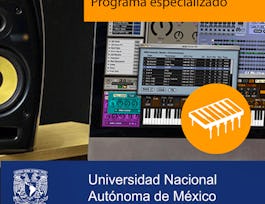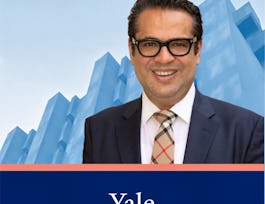This course is for anyone who would like to apply their technical skills to creative work ranging from video games to art installations to interactive music, and also for artists who would like to use programming in their artistic practice.


Creative Programming for Digital Media & Mobile Apps
Taught in English
Some content may not be translated
16,790 already enrolled
(54 reviews)
Details to know

Add to your LinkedIn profile
27 quizzes
See how employees at top companies are mastering in-demand skills


Earn a career certificate
Add this credential to your LinkedIn profile, resume, or CV
Share it on social media and in your performance review

There are 5 modules in this course
This week we are getting up and running with the Processing IDE. We will show you the basics of writing Processing sketches then move onto some graphics and audio concepts. Mick will then introduce our first audiovisual example - SonicPainter, which allows users to interactively paint with synchronised graphics and sound.
What's included
11 videos4 readings6 quizzes1 peer review
This week we are looking at using images and video, and also finding out how to control sound more fully in an interactive way. We're going to be showing you a really basic interactive VJ/DJ app called 'DJTube', which is a very simple example of how to create and load video, images and animations on desktops / mobile devices, and also use them as a basic user interface.
What's included
8 videos2 readings5 quizzes
This week is all about creating an Audiovisualiser. This is a really popular and interesting topic that has lots of applications, from music players, to game engines, to more complex things such as DSP. We'll be learning about algorithmic graphics, audio analysis, and also about using the accelerometer features of your phone. Remember that many desktops don't have accelerometers, no matter how much you shake them!
What's included
8 videos2 readings6 quizzes1 peer review
This week we will be creating a physics based game using a Physics engine based on Box2D. Physics engines are a fantastic way of creating dynamic gameplay that models the real world. Box2D is one of the most popular because it is optimised to be fast for 2D games that don't need the heavy processing of a 3D engine. It is used in many important 2D games, most famously Angry Birds. We will be using boxwrap2D which is a Java port of the original C++ version of Box2D, that is designed to work with Processing. Since boxwrap2D is java only we have created our own port to JavaScript, which interfaces to the javascript version of Box2D, but provides an almost identical interface to the Processing version.
What's included
9 videos2 readings6 quizzes
Welcome to the final week of Creative Programming for Digital Media and Mobile apps. This week, we are going to move back to one of our favorite areas of app development - music apps. We have a very special guest this week - Martin Roth from RJDJ. Martin has lots of experience working on consumer mobile music applications, including the amazing Inception app, and The Dark Knight Rises. He shares his views on the expanding space in mobile music applications, and offers us his opinion on the WebAudio API. Meanwhile, Matt will be showing you how to create a very basic drum sequencer, and Marco will take you through the basics of sliders and multisliders, which are particularly useful for controlling parameters in music apps. Mick will then be taking you through some synthesiser examples in WebAudio, and talk you through the Music Machine example, which is a great place to kick off making a professional interactive music app for mobile.
What's included
6 videos1 reading4 quizzes1 peer review
Instructors


Recommended if you're interested in Software Development

Universidad Nacional Autónoma de México

Yale University

Institut Mines-Télécom
Why people choose Coursera for their career




Learner reviews
Showing 3 of 54
54 reviews
- 5 stars
61.11%
- 4 stars
16.66%
- 3 stars
5.55%
- 2 stars
5.55%
- 1 star
11.11%
New to Software Development? Start here.

Open new doors with Coursera Plus
Unlimited access to 7,000+ world-class courses, hands-on projects, and job-ready certificate programs - all included in your subscription
Advance your career with an online degree
Earn a degree from world-class universities - 100% online
Join over 3,400 global companies that choose Coursera for Business
Upskill your employees to excel in the digital economy
Frequently asked questions
Access to lectures and assignments depends on your type of enrollment. If you take a course in audit mode, you will be able to see most course materials for free. To access graded assignments and to earn a Certificate, you will need to purchase the Certificate experience, during or after your audit. If you don't see the audit option:
The course may not offer an audit option. You can try a Free Trial instead, or apply for Financial Aid.
The course may offer 'Full Course, No Certificate' instead. This option lets you see all course materials, submit required assessments, and get a final grade. This also means that you will not be able to purchase a Certificate experience.
When you purchase a Certificate you get access to all course materials, including graded assignments. Upon completing the course, your electronic Certificate will be added to your Accomplishments page - from there, you can print your Certificate or add it to your LinkedIn profile. If you only want to read and view the course content, you can audit the course for free.
You will be eligible for a full refund until two weeks after your payment date, or (for courses that have just launched) until two weeks after the first session of the course begins, whichever is later. You cannot receive a refund once you’ve earned a Course Certificate, even if you complete the course within the two-week refund period. See our full refund policy.






